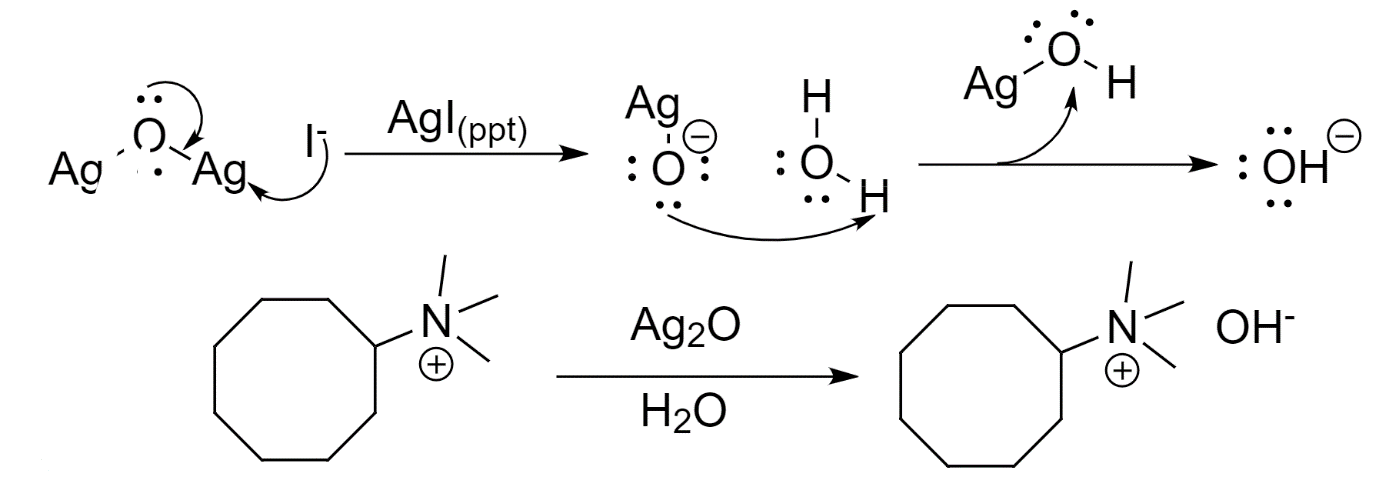Question
Question: Explain Hoffmann's exhaustive alkylation with examples....
Explain Hoffmann's exhaustive alkylation with examples.
Solution
To explain Hoffmann's exhaustive alkylation, we first need to know what is Hoffmann's rule. According to Hoffmann's rule, during elimination reactions, the alkene which is the least substituted will be formed as a major product.
Complete answer:
Hoffmann's rule stated that in eliminating reactions of an amine, the outcome of the product is heavily dependent on the steric effects. Since the least substituted position in an alkane is the least hindered, the loss of β-hydrogen occurs from this position.
−CH3>−CH2R>−CHR2
This is why the olefin or the alkene which is the least substituted will be formed as a major product. The product formed is known as Hoffman Product.
Now, when an amine is treated with an excess of an alkyl iodide to form an alkene, the process is known as Hoffman exhaustive alkylation.
The alkyl iodide used in Hoffman exhaustive alkylation is methyl iodide CH3I because it does not contain any β-hydrogens and hence cannot take part in the elimination reaction itself. So, the process is also known as Hoffman exhaustive methylation.
Let us understand the mechanism of Hoffman exhaustive methylation by taking dimethylcyclooctanamine as the amine which is used to synthesize cyclooctene.
- First, the excess methyl iodide attacks the β-hydrogens of the dimethylcyclooctanamine to form an ammonium iodide salt.

- The iodide ion formed is substituted with the hydroxide ion. This is done by reacting silver oxide and iodide and water being deprotonated successively by the ion of silver oxide.

- Finally, to facilitate the elimination reaction, the reaction mixture is heated to obtain cyclooctene.

- Further, trans-cyclooctene can be isolated from the cis-trans mixture of products as follows

Note:
It should be noted that among neutral −NH3 groups, anionic −NH2 and −NR2 groups, the better leaving group is neutral −NH3. Large leaving groups also affect the products formed in the reaction due to steric effects.
